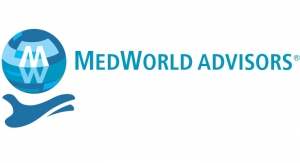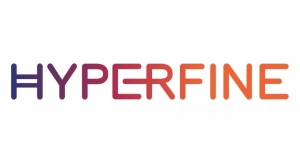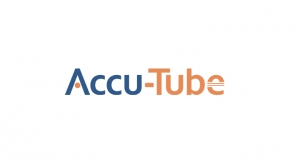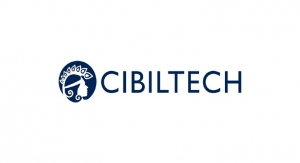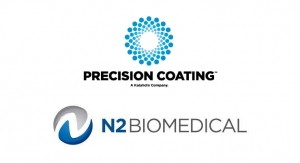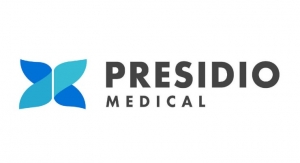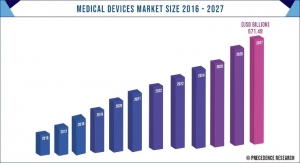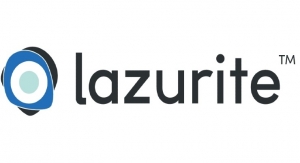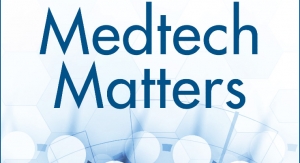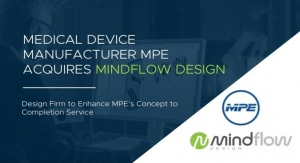Bryan Hughes, Director, P&M Corporate Finance03.14.18
Twelve months ago, Johnson & Johnson subsidiary Ethicon Inc. announced plans to close a surgical suture plant in Livingston, Scotland, and transfer production to facilities in Texas, Mexico, and Brazil. The closure—Ethicon’s second of a Scottish suture manufacturing plant—is part of a global restructuring plan for J&J’s medical device business.
Announced in early 2016, the plan is designed to accelerate the pace of innovation, address unmet needs, and drive growth. By identifying $1 billion in pretax cost-savings, J&J management anticipates having significantly more resources and flexibility to fund the development of innovative patient solutions. Gary Pruden, Worldwide Chairman of Johnson & Johnson Medical Devices, stated, “The bold steps we are taking are to evolve our offerings, structure, and footprint, and increase our investment in innovation.”
While $1 billion represents less than 10 percent of the combined cost of goods sold and SG&A of Johnson & Johnson’s device business, the scale of the restructuring effort is significant. The company expects its restructuring effort to cost between $2 billion and $2.4 billion. As importantly, through the end of 2017 J&J had spent almost $1 billion on outside consultants and other project management expenses related specifically to this effort.
Prior MPO articles and MPO Summit presentations have explored similar restructuring efforts at Medtronic plc to achieve operating margin improvements of roughly 650 basis points. In that instance, Medtronic used the Covidien synergies as the “catalyst for a long tail of leverage opportunities beyond FY18.” Including an initial $850 million in synergies expected from the Covidien acquisition, Medtronic expects to cut SG&A expenses by $1.7 billion and COGS (cost of goods sold) by more than $3 billion. If J&J follows a similar playbook to Medtronic, more transformative changes will occur as the company reshapes its business.
Impact From Tax Reform
These initiatives come as medical device and life sciences companies are critically assessing global supply chain strategies in the wake of the Tax Cuts & Jobs Act and the Trump administration’s decidedly “America First” trade agenda. On one hand, companies like J&J and Medtronic, along with other medical device and pharmaceutical companies, hold tens of billions of dollars in cash outside the United States. Under the new “repatriation tax” rules included in the Tax Cuts & Jobs Act, large companies will have to pay a tax on cash stockpiles whether or not they bring the money back to the United States. Accordingly, many medical device companies absorbed significant one-time earnings charges in Q1 2018 to account for the tax but now have full access to this cash. The ability to access this capital gives companies more flexibility in allocating resources for potential mergers and acquisitions, dividends, and shareholder buybacks. While most CEOs and finance chiefs have suggested the new tax law won’t change capital allocation strategies, they also have hailed the reform package as a boon for M&A.
In last month’s Dollars & $ense column, Mark Bonifacio highlighted the potential negative impact of tax reform, specifically noting Section 4303’s effect on international supply chains. In typical Washington fashion, Section 4303 was replaced in the final bill with a slightly different U.S. Senate proposal codified in section 59A. The “base erosion and anti-abuse tax” (BEAT) is focused on large corporations and operates differently than Section 4303; for companies with more than $500 million in annual revenue, BEAT is generally calculated as 10 percent of modified taxable income. An explanation of the formula for calculating modified taxable income would take up the balance of this magazine, but suffice to say it functions much like an alternative minimum tax intended to prevent offshoring of income to tax havens. Local profits on medical products manufactured by international subsidiaries may still end up being taxed, but the negative impact on regions like Puerto Rico should be muted. Moreover, in aggregate, the lower corporate tax rates now in place should drive further investment in R&D, new manufacturing facilities, and human capital. These investments, in turn, could fuel future M&A.
Medical Manufacturing’s Great Opportunity
Market forces within healthcare are rapidly changing. To be successful and drive shareholder value in a low-tax environment, medical technology companies must continuously invest in innovation. One such strategy employed by OEMs like J&J entails spending hundreds of millions of dollars annually with outside consultants on restructuring and/or business reinvigoration plans. As global consulting firms like McKinsey, Bain, and The Boston Consulting Group (BCG) develop deep institutional knowledge on industry best practices, this insight often filters back to the broader public via white papers and other thought pieces.
In December, BCG released one such publication titled, “Medtech Manufacturing’s Inflection Point.” Focused on discussing that firm’s recent analysis of the medical manufacturing landscape, as well as executive interviews regarding manufacturing strategy, the report could be viewed as a rallying cry to transform medical product manufacturing. The report begins by observing that medical technology manufacturing networks have grown bigger over the last decade, but they have not necessarily improved.
Among other data points supporting this observation, the BCG team analyzed a comprehensive database of U.S. Food and Drug Administration (FDA) registration filings over the last eight years and concluded:
It’s unclear whether this analysis considered the impact of 2012 changes to FDA regulations on device establishment registration; however, the conclusion about the percentage of currently outsourced device manufacturing aligns closely with PMCF’s own analysis. While we view each of these findings as important to understanding the constantly changing landscape within medical product outsourcing, I view the specific conclusions around contract manufacturing as most interesting. In part, this is because BCG’s observations overlay with many of the considerations we have discussed previously:
More importantly, the authors of this whitepaper and their peers at other firms are presumably very active voices in C-suite and board level discussions regarding manufacturing strategy at the largest players in medtech. It is hard to believe they would make strong statements in this forum, and yet advise their clients to “keep doing what they’re doing.”
Assuming this is indeed true, the industry likely is in for a very interesting ride over the next several years as the supply chain transforms itself. BCG concluded its assessment by stating, “It’s time for medtech companies to become more proactive and systematic about building the manufacturing network they need to thrive in a more dynamic and competitive market.”
So Now What?
From a practical perspective, what does that statement really mean for the medical product outsourcing industry? And for that matter, will the drastically changed tax landscape have an impact on where products and devices are manufactured? What will J&J’s restructured Medical Device business and supply chain look like? At last year’s MPO Summit, Randall Sword and I concluded our presentation by presenting four key takeaways and asking three critical questions. In the context of the aforementioned BCG publication, it seems wise to re-examine these points.
Bryan Hughes is a director of PMCF and leads the firm’s medical technology team. His practice focuses on assisting medical technology and medical manufacturing clients with mergers and acquisitions, leveraged buyouts, private placements, financings, valuation and strategic consulting. His clients have ranged from global medical technology companies to small, privately held businesses.
Announced in early 2016, the plan is designed to accelerate the pace of innovation, address unmet needs, and drive growth. By identifying $1 billion in pretax cost-savings, J&J management anticipates having significantly more resources and flexibility to fund the development of innovative patient solutions. Gary Pruden, Worldwide Chairman of Johnson & Johnson Medical Devices, stated, “The bold steps we are taking are to evolve our offerings, structure, and footprint, and increase our investment in innovation.”
While $1 billion represents less than 10 percent of the combined cost of goods sold and SG&A of Johnson & Johnson’s device business, the scale of the restructuring effort is significant. The company expects its restructuring effort to cost between $2 billion and $2.4 billion. As importantly, through the end of 2017 J&J had spent almost $1 billion on outside consultants and other project management expenses related specifically to this effort.
Prior MPO articles and MPO Summit presentations have explored similar restructuring efforts at Medtronic plc to achieve operating margin improvements of roughly 650 basis points. In that instance, Medtronic used the Covidien synergies as the “catalyst for a long tail of leverage opportunities beyond FY18.” Including an initial $850 million in synergies expected from the Covidien acquisition, Medtronic expects to cut SG&A expenses by $1.7 billion and COGS (cost of goods sold) by more than $3 billion. If J&J follows a similar playbook to Medtronic, more transformative changes will occur as the company reshapes its business.
Impact From Tax Reform
These initiatives come as medical device and life sciences companies are critically assessing global supply chain strategies in the wake of the Tax Cuts & Jobs Act and the Trump administration’s decidedly “America First” trade agenda. On one hand, companies like J&J and Medtronic, along with other medical device and pharmaceutical companies, hold tens of billions of dollars in cash outside the United States. Under the new “repatriation tax” rules included in the Tax Cuts & Jobs Act, large companies will have to pay a tax on cash stockpiles whether or not they bring the money back to the United States. Accordingly, many medical device companies absorbed significant one-time earnings charges in Q1 2018 to account for the tax but now have full access to this cash. The ability to access this capital gives companies more flexibility in allocating resources for potential mergers and acquisitions, dividends, and shareholder buybacks. While most CEOs and finance chiefs have suggested the new tax law won’t change capital allocation strategies, they also have hailed the reform package as a boon for M&A.
In last month’s Dollars & $ense column, Mark Bonifacio highlighted the potential negative impact of tax reform, specifically noting Section 4303’s effect on international supply chains. In typical Washington fashion, Section 4303 was replaced in the final bill with a slightly different U.S. Senate proposal codified in section 59A. The “base erosion and anti-abuse tax” (BEAT) is focused on large corporations and operates differently than Section 4303; for companies with more than $500 million in annual revenue, BEAT is generally calculated as 10 percent of modified taxable income. An explanation of the formula for calculating modified taxable income would take up the balance of this magazine, but suffice to say it functions much like an alternative minimum tax intended to prevent offshoring of income to tax havens. Local profits on medical products manufactured by international subsidiaries may still end up being taxed, but the negative impact on regions like Puerto Rico should be muted. Moreover, in aggregate, the lower corporate tax rates now in place should drive further investment in R&D, new manufacturing facilities, and human capital. These investments, in turn, could fuel future M&A.
Medical Manufacturing’s Great Opportunity
Market forces within healthcare are rapidly changing. To be successful and drive shareholder value in a low-tax environment, medical technology companies must continuously invest in innovation. One such strategy employed by OEMs like J&J entails spending hundreds of millions of dollars annually with outside consultants on restructuring and/or business reinvigoration plans. As global consulting firms like McKinsey, Bain, and The Boston Consulting Group (BCG) develop deep institutional knowledge on industry best practices, this insight often filters back to the broader public via white papers and other thought pieces.
In December, BCG released one such publication titled, “Medtech Manufacturing’s Inflection Point.” Focused on discussing that firm’s recent analysis of the medical manufacturing landscape, as well as executive interviews regarding manufacturing strategy, the report could be viewed as a rallying cry to transform medical product manufacturing. The report begins by observing that medical technology manufacturing networks have grown bigger over the last decade, but they have not necessarily improved.
Among other data points supporting this observation, the BCG team analyzed a comprehensive database of U.S. Food and Drug Administration (FDA) registration filings over the last eight years and concluded:
- Medtech supply chains are not optimized to take advantage of scale benefits
- The complexity and diversity of medtech portfolios creates a manufacturing challenge
- Medtech lags other industries in shifting production to low-cost countries
- Despite the prior points, contract manufacturing has increased
It’s unclear whether this analysis considered the impact of 2012 changes to FDA regulations on device establishment registration; however, the conclusion about the percentage of currently outsourced device manufacturing aligns closely with PMCF’s own analysis. While we view each of these findings as important to understanding the constantly changing landscape within medical product outsourcing, I view the specific conclusions around contract manufacturing as most interesting. In part, this is because BCG’s observations overlay with many of the considerations we have discussed previously:
- Enhanced capabilities across suppliers
- Impact of consolidation on capabilities and scale
- Aggressive pursuit of medtech by traditional EMS/interconnect firms
More importantly, the authors of this whitepaper and their peers at other firms are presumably very active voices in C-suite and board level discussions regarding manufacturing strategy at the largest players in medtech. It is hard to believe they would make strong statements in this forum, and yet advise their clients to “keep doing what they’re doing.”
Assuming this is indeed true, the industry likely is in for a very interesting ride over the next several years as the supply chain transforms itself. BCG concluded its assessment by stating, “It’s time for medtech companies to become more proactive and systematic about building the manufacturing network they need to thrive in a more dynamic and competitive market.”
So Now What?
From a practical perspective, what does that statement really mean for the medical product outsourcing industry? And for that matter, will the drastically changed tax landscape have an impact on where products and devices are manufactured? What will J&J’s restructured Medical Device business and supply chain look like? At last year’s MPO Summit, Randall Sword and I concluded our presentation by presenting four key takeaways and asking three critical questions. In the context of the aforementioned BCG publication, it seems wise to re-examine these points.
- OEM consolidation and pricing pressure. The healthcare industry is currently experiencing fundamental change. In the face of this change, and parallel price pressure, medical device OEMs are evolving and seeking operational and R&D leverage through acquisition. This will place downward pressure on manufacturing networks as footprints are integrated and companies seek maximum operational leverage to reinvest capital in innovative new technologies.
- Fragmentation, yet differentiation. The Top 20 medical contract manufacturers (CMs) generate approximately $12 billion in annual revenue. As customers consolidate and focus more resources on the supply chain, the largest CMs will respond by getting larger themselves. This growing list of large suppliers provides device OEMs advantages from scale, flexibility in geographic sourcing, and dedicated capabilities that may not otherwise exist in house.
- What happens to innovation? Device companies may need to increase their focus on portfolio management and optimization in order to dedicate resources to developing innovative technologies. Accordingly, there likely will be further divestitures of slower growth product lines/portfolios. In the near-term, product lifecycle management may be reimagined with legacy, slow growth products potentially “outsourced” to supply chain partners responsible for the full continuum of manufacturing, and product-line extensions and related development.
- Will medtech become merely an end market? Companies like Nordson, SFS Group, and TE Connectivity have grown their medical franchises quickly through acquisition, and yet medical still represents a small percentage of their overall revenue. With EMS players like Flex, Jabil, and Celestica also aggressively pursuing medtech, expect medical products and devices to become a much larger percentage of industrial conglomerates’ revenue. As these players seek further scale, it is likely they will benefit from larger program awards, and drive M&A activity.
- If margins suffer, what happens to quality? Quality is table stakes in this industry. While there will always be pressure on margins, the quality requirements as demanded by OEMs, dictated by the FDA, and essential for patients cannot be softened. Accordingly, suppliers facing margin pressure may need to invest in automation or other continuous improvement initiatives to maintain the financial return necessary to sustain quality. Those that can’t stay in the market long, won’t remain, perhaps further accelerating supplier consolidation.
- As much as this industry is focused on innovative devices and solutions, change tends to come slowly. Perhaps the corporate restructuring currently underway at Medtronic, J&J, and others represents the inflection point in medtech manufacturing. As an industry, hopefully OEMs and suppliers will seize the opportunity and radically rethink manufacturing networks. Will this lead to focused outsourcing, more lifecycle partnering, and robust M&A activity? Only time will tell.
Bryan Hughes is a director of PMCF and leads the firm’s medical technology team. His practice focuses on assisting medical technology and medical manufacturing clients with mergers and acquisitions, leveraged buyouts, private placements, financings, valuation and strategic consulting. His clients have ranged from global medical technology companies to small, privately held businesses.



